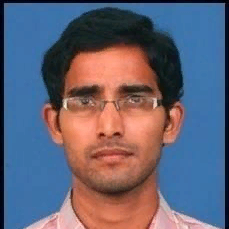
D.Shanmukha Rao
Work place: Microwave Remote Sensing and Global Data Processing, SDAPSA, National Remote Sensing Centre, Balanagar, Hyderabad, India-500037
E-mail: shanmukha_rao@nrsc.gov.in
Website:
Research Interests: Data Structures and Algorithms, Image Processing, Image Manipulation, Image Compression
Biography
Mr. D. Shanmukha Rao did his M.Sc, Mathematics from Andhra University, Visakhapatnam. He is currently working as a Scientist in Data Processing Area in National Remote Sensing Centre, Indian Space Research Organization (ISRO). He is involved in algorithm development for data processing and image analysis.
Author Articles
Application of Texture Characteristics for Urban Feature Extraction from Optical Satellite Images
By D.Shanmukha Rao A.V.V. Prasad Thara Nair
DOI: https://doi.org/10.5815/ijigsp.2015.01.03, Pub. Date: 8 Dec. 2014
Quest of fool proof methods for extracting various urban features from high resolution satellite imagery with minimal human intervention has resulted in developing texture based algorithms. In view of the fact that the textural properties of images provide valuable information for discrimination purposes, it is appropriate to employ texture based algorithms for feature extraction. The Gray Level Co-occurrence Matrix (GLCM) method represents a highly efficient technique of extracting second order statistical texture features. The various urban features can be distinguished based on a set of features viz. energy, entropy, homogeneity etc. that characterize different aspects of the underlying texture. As a preliminary step, notable numbers of regions of interests of the urban feature and contrast locations are identified visually. After calculating Gray Level Co-occurrence matrices of these selected regions, the aforementioned texture features are computed. These features can be used to shape a high-dimensional feature vector to carry out content based retrieval. The insignificant features are eliminated to reduce the dimensionality of the feature vector by executing Principal Components Analysis (PCA). The selection of the discriminating features is also aided by the value of Jeffreys-Matusita (JM) distance which serves as a measure of class separability Feature identification is then carried out by computing these chosen feature vectors for every pixel of the entire image and comparing it with their corresponding mean values. This helps in identifying and classifying the pixels corresponding to urban feature being extracted. To reduce the commission errors, various index values viz. Soil Adjusted Vegetation Index (SAVI), Normalized Difference Vegetation Index (NDVI) and Normalized Difference Water Index (NDWI) are assessed for each pixel. The extracted output is then median filtered to isolate the feature of interest after removing the salt and pepper noise present, if any. Accuracy assessment of the methodology is performed by comparing the pixel-based evaluation on the basis of visual assessment of the image and the resultant mask image. This algorithm has been validated using high resolution images and its performance is found to be satisfactory.
[...] Read more.Other Articles
Subscribe to receive issue release notifications and newsletters from MECS Press journals